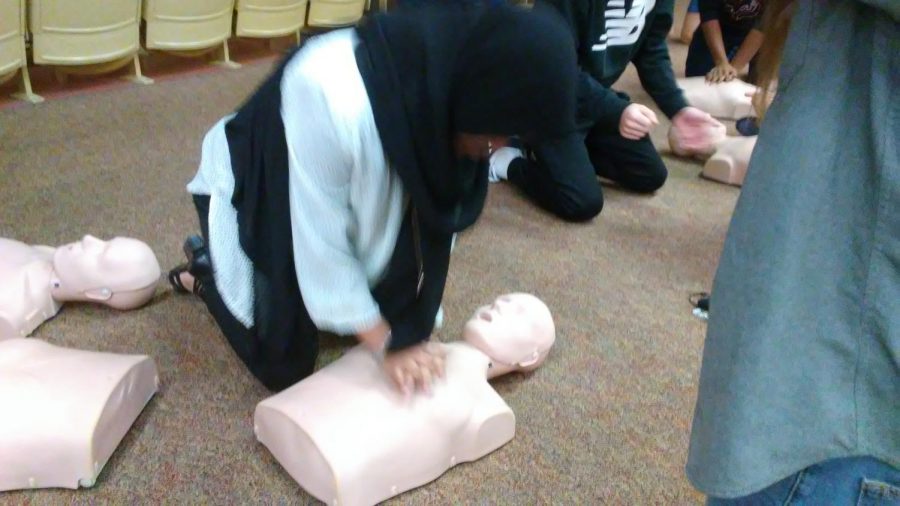How to perform hands-on CPR
Khadejah Mohiuddin, a sophomore here at North Penn, was one of many students required to perform hands-on CPR.
Monday morning, Mr. Steven Young’s and Mr. Jaimey Jones’ fourth period health classes all flooded to the auditorium, either aware or blissfully unaware of what was happening. The students, while continuing to have their own conversations, were made all too aware of the mannequins lying on the ground. Once everyone was seated, the health teachers and instructor explained why they were all there.
They were all going to be taught how to perform hands-only CPR. “[They’ll] have the tools to potentially save someone’s life,” explains Mr. Steven Young, a health teacher here at North Penn High School.
This has been a program established in November of 2016, but not everyone attended or remembers what to do. Here’s a quick run through on what to do if the scenario should arise.:
This could be used in the scenario of being around someone who is going into cardiac arrest. The symptoms may vary from person to person, but they all follow the same basic traits.
Before going into cardiac arrest, one may experience chest discomfort, shortness of breath, weakness, and heart palpitations. More often than not, however, the effect is immediate. Someone may be going into cardiac arrest if they collapse suddenly, are unconscious, aren’t breathing, or have no pulse.
If someone is to collapse in front of you, first follow the acronym coined by Mr. Jones, LLF. Get close to the person and lay your head near their mouth. Look down their body to see if their chest or stomach is rising, listen for any breathing or even whistling in case they are choking, and see if you can feel their breath on your face.
If none of these work, call 911 immediately. Stay on the line with the official and they’ll be able to calm you down and tell you what to do if you forget. Then you have to call for help verbally. Jones advised students to yell “fire!” if nobody responds immediately in the fear of getting involved. This is more likely to catch someone’s attention.
While still on the phone, you need to follow these steps in order to help the victim:
1. Get into position, placing one hand over the other, interlocking your fingers, and closing the hand on the top.
2. Place the “heel” of your palm, the hardest part of your hand, in the center of the victim’s chest
3. Sit on your knees with your arms straight in front of you with your palms on the person. Make sure that you are directly over them and your arms stay straight through the entire procedure
4. Use your whole body and push on the person’s chest, making sure that their sternum goes in two inches to get the heart stimulated
5. Continue to push on the person’s chest, going in two inches each time. You need to get in 100 beats per minute to keep the person alive. If it helps, and it does sound silly, sing “Baby Shark” or “Stayin’ Alive” in your head- their tempos match the rate at which you should be pushing
6. If you get tired, have someone press in the small space under their scrotum while you two switch off. Someone should also grab one of the four defibrillators found on the first floor of the school. One could be found in the nurse’s office, outside the athletic training office, and in the faculty dining room.
7. Try to keep the victim alive until the authorities get there. The authorities say they can get to the school in five minutes, but it’ll still take time to find the location of the person since not everyone knows the layout of the school.
If you want to be able to learn more about hands-only CPR and want to learn about how to be Red Cross certified in CPR and other life-saving procedures, be sure to enroll in Mrs. Kelley’s emergency health class.
https://www.mayoclinic.org/diseases-conditions/sudden-cardiac-arrest/symptoms-causes/syc-20350634


